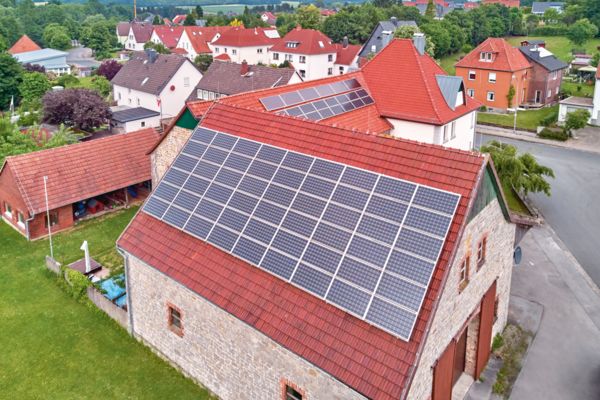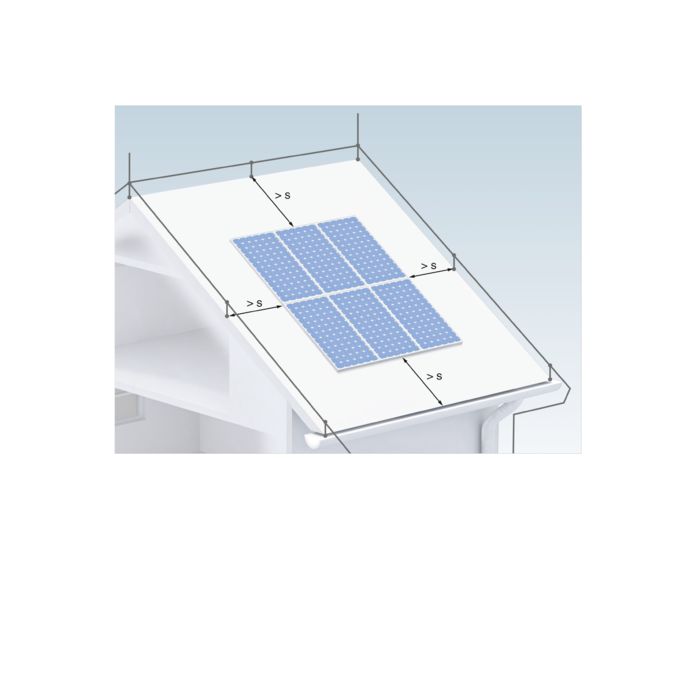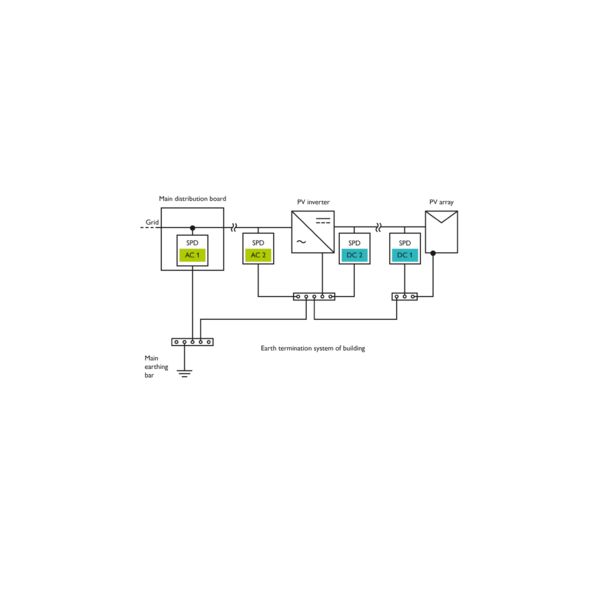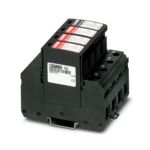Selecting the right surge protection Installation location and applications. Find out more and download the brochure on “Lightning and surge protection for photovoltaic systems”.

Possible rooftop systems:

Building without external lightning protection
Building without external lightning protection
A lightning strike on the building has not been taken into consideration. A photovoltaic system also does not increase the risk of being struck by lightning. The photovoltaic system is integrated into the equipotential bonding.

Building with external lightning protection and separation distance “s” observed
Building with external lightning protection and separation distance “s” observed
The PV panels are installed a sufficient distance from the lightning protection system in the protection zone. The photovoltaic system is optimally protected in the event of a lightning strike. The photovoltaic system is integrated into the equipotential bonding.

Building with external lightning protection but separation distance “s” not observed
Building with external lightning protection but separation distance “s” not observed
The PV panels are installed close to the lightning protection system. Therefore, in the event of a lightning strike, there could be a dangerous sparkover to the photovoltaic system. To prevent this, the PV panels and/or the PV mounting frame are connected properly to the lightning protection system. Please note here that partial lightning currents are introduced into the building. The equipotential bonding must be able to handle lightning currents.
The right installation location

Surge protective devices near the inverter and the photovoltaic system
Installation locations and installation conditions
| AC voltage 1 | AC voltage 2 | DC voltage 1 | DC voltage 2 | |
|---|---|---|---|---|
| Installation location | Main distribution | AC side of the inverter (cable length to the main distribution ≥10 m) | DC side of the inverter (cable length to the PV panels ≥10 m) | Near the PV panels or the entrance to the building |
| Without external lightning protection | Type 2 SPD | Type 2 SPD | Type 2 SPD | Type 2 SPD |
| With external lightning protection, separation distance is observed | Type 1 SPD | Type 2 SPD | Type 2 SPD | Type 2 SPD |
| With external lightning protection, separation distance is not observed | Type 1 SPD | Type 1 SPD | Type 1 SPD | Type 1 SPD |
Surge protective devices for the AC side
 |
 |
 |
 |
|
|---|---|---|---|---|
| Type 1+2 combined lightning current and surge arresters | Type 1+2 combined lightning current and surge arresters | Type 2 surge protective devices | Type 2 surge protective devices | |
| Power supply network | 3-phase | 1-phase | 3-phase | 1-phase |
| Designation | VAL-MS-T1/T2 335/12.5/3+1 | VAL-MS-T1/T2 335/12.5/1+1 | VAL-MS 320/3+1 | VAL-MS 320/1+1 |
| Item number without remote indication contact | 2800184 | 2800187 | 2859178 | 2804380 |
| Item number with remote indication contact | 2800183 | 2800186 | 2859181 | 2804393 |
Surge protective devices for the DC side
 |
 |
 |
 |
|
|---|---|---|---|---|
| Type 2 surge protective devices | Type 2 surge protective devices | Type 2 surge protective devices | Type 2 surge protective devices | |
| Maximum continuous voltage UCPV | 1500 V DC | 600 V DC | 1000 V DC | 1500 V DC |
| Total discharge surge current Itotal | 40 kA | 40 kA | 40 kA | 30 kA |
| Designation | VAL-MB-T2 1500DC-PV/2+V | VAL-MS 600DC-PV/2+V | VAL-MS 1000DC-PV/2+V | VAL-MS 1500DC-PV/2+V |
| Product feature | Not pluggable | Pluggable | Pluggable | Pluggable |
| Item number without remote indication contact | 2905647 | 2800642 | 2800628 | 1033708 |
| Item number with remote indication contact | 2905646 | 2800641 | 2800627 | 1033725 |
In many cases, several MPP trackers and inverters are used. It is important that each MPP tracker is configured separately. The string cables are distributed to the MPP trackers and inverters and must not be interconnected. Therefore, also use a separate surge protective device for each MPP tracker and inverter.
If two or more MPP trackers are protected with surge protective devices, the discharge current is divided once again. This allows a smaller surge protective device to be used, if necessary.
You can also order our surge protective devices as ready-to-connect versions in a housing for surface mounting. We offer the appropriate box for many inverters. Simply select your inverter and we will show you the corresponding boxes.
Surge protective devices for interfaces
In addition to the four installation locations of surge protective devices for PV systems that have been highlighted so far, there is another area that you shouldn’t forget:
The protection of communication interfaces is not necessarily required by standards, but is nevertheless highly recommended. The inverter electronics can actually be damaged by overvoltages via a network cable or a thin control line, thus disrupting the operation of the photovoltaic system.
Digital inputs for power regulation, a weather station, Ethernet, RS-485: all of these are examples of common interfaces that need to be protected.
